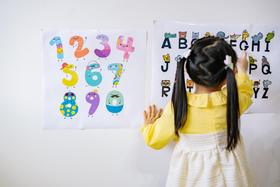For the 2024-25 school year, there is 1 public preschool serving 154 students in Elmsford, NY.
Elmsford, NY public preschools have a diversity score of 0.58, which is less than the New York public preschool average of 0.73.
Minority enrollment is 91% of the student body (majority Hispanic), which is more than the New York public preschool average of 62% (majority Hispanic).
Best Public Preschools in Elmsford, NY (2024-25)
School
(Math and Reading Proficiency)
(Math and Reading Proficiency)
Location
Grades
Students
Rank: n/an/a
Carl L Dixson Elementary School
Magnet School
22 S Hillside Ave
Elmsford, NY 10523
(914) 592-2092
Elmsford, NY 10523
(914) 592-2092
Grades: PK-1
| 154 students
Elmsford, New York Public Schools (Closed)
School
Location
Grades
Students
98 South Goodwin Avenue
Elmsford, NY 10523
(914) 592-8440
Elmsford, NY 10523
(914) 592-8440
Grades: 7-12
| 472 students
Renaissance Project (The) (Closed 2004)
Alternative School
250 Clearbrook Rd
Elmsford, NY 10523
Elmsford, NY 10523
Grades: n/a
| n/a students
Frequently Asked Questions
How many public preschools are located in Elmsford, NY?
1 public preschools are located in Elmsford, NY.
What is the racial composition of students in Elmsford?
Elmsford public preschools minority enrollment is 91% of the student body (majority Hispanic), which is more than the New York public preschools average of 62% (majority Hispanic).
Recent Articles

5 Tips for Helping Your Autistic Child Excel in Public Schools
Learn about five ways you can work with your child's public school, teachers, and special programs to help your autistic child succeed academically.

How Schools are Cutting More Costs in 2011
Budget cuts continue to cripple school districts across the country, forcing some schools to make major cuts creatively. Learn about the current situation and how some public schools are coping with the budget shortfalls.

September 27, 2024
Understanding RubricsThis article explores the fundamental principles of rubrics in education, focusing on their role as assessment tools. It breaks down the key components of rubrics, including criteria, performance levels, and descriptors. The piece also delves into the two main types of rubrics - holistic and analytic - providing authoritative definitions and explaining their unique applications in educational settings.
